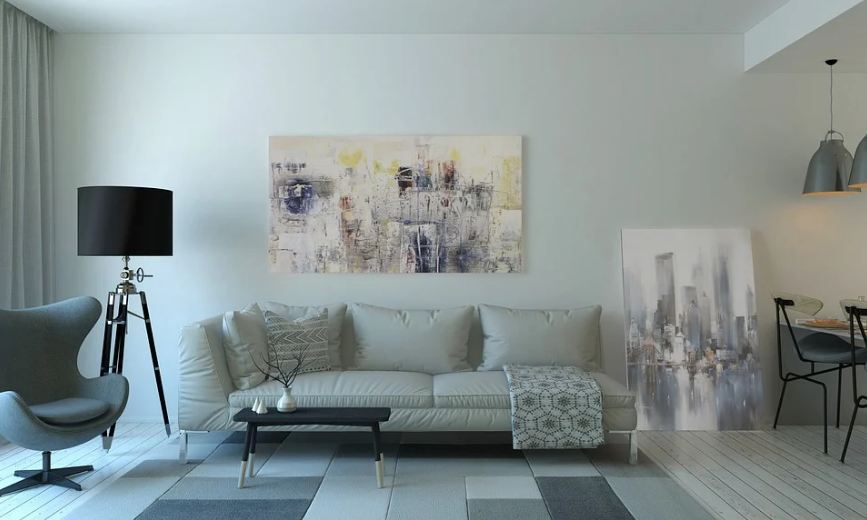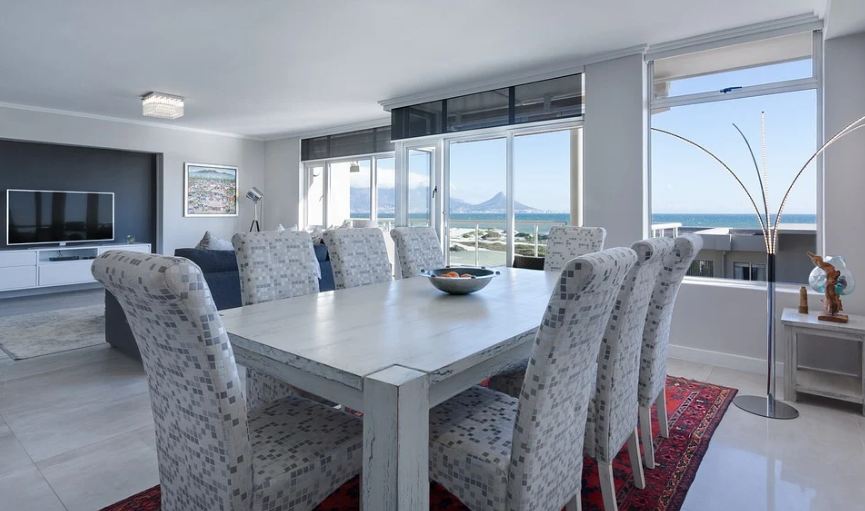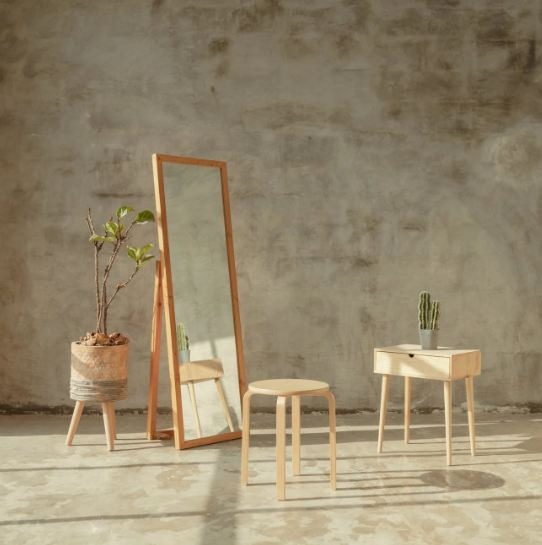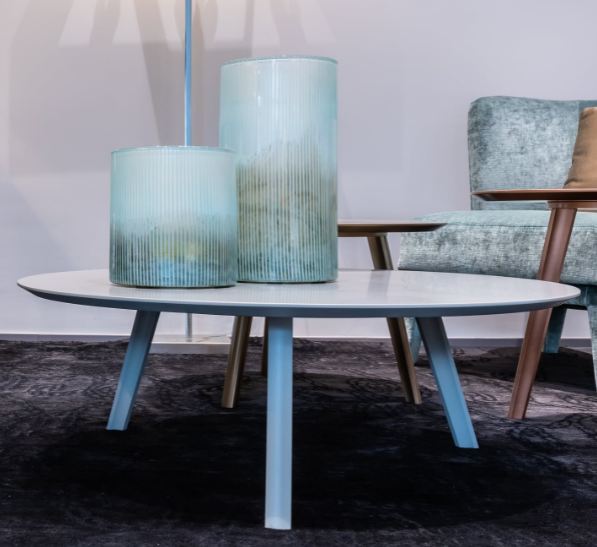Most rooms with low square footage feel confining and uncomfortable to stay in. However, the key to successful small-space living is simpler than you think: it is all about tricking the eye into perceiving more space. If you, too, own a small space and are sick of how cramped up it feels, you have come to the right place. With the following interior design-inspired tips, you can learn how to make your room look larger:
But if you want to know first the best online casino in Australia, you must visit jokaroom.
1. Use Light Colors to Paint the Room
Making a room seem larger is all about creating the right optical illusion, and that is where colors come to play. Bright and deep paint colors add contrast to the room, which creates the illusion of a larger space. On the other hand, dark shades make a room seem smaller as they absorb light.
In the design world, white color is especially famous for its reflective qualities as it opens up space, making the room feel light and airy. To further maximize the effect of natural light and enhance the cloud-like effect, paint both the ceiling and the walls the same shade of white. Doing so will blur the boundary between the two, making the ceiling seem higher and the room bigger and brighter.
If an all-white space seems too cold for your style, you can pair it with some elements that add warmth and texture, such as a wooden floor or wool rug. If you are not in the mood for stark white walls and want to try something different, you can also opt for other soft tones like pastel blues and greens and off-white. For optimum effect, paint your wall trim and moldings one shade lighter than your walls. Doing so will make the walls appear farther back, creating the illusion of a larger room.
2. Open up your space with lighting
As we saw with paint colors, it is all about tricking the eye. Compared to a dark room, a well-lit space – be it through natural light or artificial lighting – always seems larger. Natural light instantly opens up the interior of any room, so if you have access to natural light, bring it into your room. One way of doing so is to install large windows, as they connect your room with the outdoors and allude to a wider space. If possible, ditch curtains or drapes altogether as they block the outside view. Moreover, they make the room seem more crowded, so eliminating them keeps the space simple.
If the view outside is not so pleasant, you can balance it by putting some potted plants near the windows. However, if you are uncomfortable with bare windows and want some privacy, look for shutters or sheer cloth blinds as they allow more light into the room.
Do not get discouraged if you do not have access to natural light. You can create similar creative effects using artificial lighting. Install recessed lighting or add pendant lights and see how a small addition can completely alter the outlook of your room. Instead of relying on one overhead light source to illuminate your room, use multiple sources to spread light evenly throughout the room. Installing multiple lamps in a room can make space seem more expansive.
Want to know more about how to light your room to complement your architecture? Read the following articles:
How to Choose Light Bulbs for Each Area of Your Home
How to Choose the Right Lighting for Your Home?
3. Add Reflective Surfaces in the Room
Perhaps the oldest trick in the design book to make any room seem larger is to add reflective surfaces. And what better reflective surface to use than a mirror? Mirrors create a greater sense of openness, tricking your eye into perceiving more space than there actually is. This is because they reflect not only light but also the surrounding view. Since mirrors reflect both natural and artificial light, your room will look bright during not only the day but also the night.
You can hang a large framed mirror on the wall or place a freestanding cheval mirror on the floor. Both options create the same room-enlarging effect; however, a cheval mirror adds a dash of style. For optimum results, hang the mirror on a dark wall that does not get much natural light. Placing a mirror near a window is also effective as it reflects the outside world and creates the illusion of greater square footage.
You can also install multiple mirrors in the room. The best way is to create a focal point in the room and angle all the mirrors towards that point. You can also install mirrors on opposite sides of the room from each other. That is another clever way to create the illusion of depth in a room. Using mirrored cabinet doors and topping a coffee table with a plate mirror will create a similar effect, giving your space a more open feel.
4. Show Some Leg with Your Furniture
Furniture like chairs, sofas, and tables can make your room seem crowded. Since the illusion of more space is all about creating a sense of movement and openness, go with streamlined furniture.
Any piece of furniture with exposed legs gives the room a more open and airy look. Need some inspiration? Have a look at mid-century modern furniture, such as a butterfly chair. Moreover, any furniture that is both low and has exposed legs will allow light and air to flow around it, giving it the illusion of floating in space.
5. Create a Focal Point in Your Room
A textbook rule to make a room look bigger is to establish a focal point. Any area of feature in the room that draws attention towards itself and catches the eye can serve as a focal point. For example, in the dining room, the table is the focal point, while in the bedroom, it can be the bed or dressing table.
An easy way of making any space feel wider is to make your focal point stand out. To do so, arrange all the furniture in the room around its focal point, making it the center of attention. Moreover, keep the rest of the decor in the room low so that only the focal point draws the attention.
6. Maximize the Available Space by Scaling Down the Furniture
While decorating a small space, you have to pay special attention to the furniture with which you embellish it. Finding the right furniture for any room is all about proportions. Before buying any piece of furniture, scale it to see if it fits the size of your room. As a rule of thumb, any furniture or decor piece that touches the edge of the room – be it vertical or horizontal – is a big no-no. If you have a small space, opt for smaller – in length and width- furniture. Weighty and huge pieces take up too much usable space in the room and crow it up. For instance, both an overstuffed cushion and a sleek chair provide the same sitting room, but the overstuffed cushion takes up much more space.
If you have a large piece of furniture, place it against the wall to leave maximum open space. Always leave a little space between the edges of your furniture and the wall you are putting it against. This measure creates a sense of openness and makes your room seem airier. Moreover, never place any decoration piece of furniture in the pathways. If the view into a room is blocked by anything, the room will look cramped.
7. Declutter
Nothing makes an already small space seem even more crowded than too much stuff. Less is always more, especially when you have a small living space, so channel your inner Marie Kondo and work out ways to declutter your room. Clearing out extra stuff and keeping your room tidy and organized will not only bring your inner satisfaction but also make your room seem more open. Here is a tip: you often get some additional storage space behind furniture pieces. Cannot find any space to place the old painting? Prop it behind the large tv table. Once all unnecessary things are out of sight and the necessary ones are in their place, your room will automatically feel more open.
Try to keep the floor of your room as decor-free as possible. While rugs and carpets may look stylish and add an edge to your interior design, they create the illusion of less floor space.
Minimalism does not only apply to your floor but also your walls. Instead of crowing the wall with multiple small paintings, cover it with one large piece of art. Not only it looks chicer, but it makes your room space seem more expansive. Removing unwanted distractions can allow you more time to enjoy options like these real money online slots.
The Takeaway
Correct color shades, furniture arrangement, creative lightning, and mirror placement can trick the eye and make any room seem more spacious than it really is. Follow these seven tips to make your small room look larger without putting a strain on your bank account!





